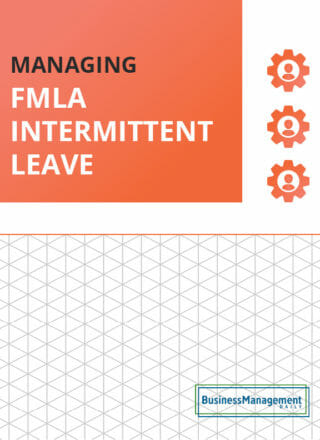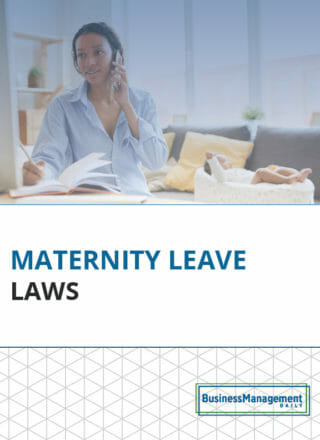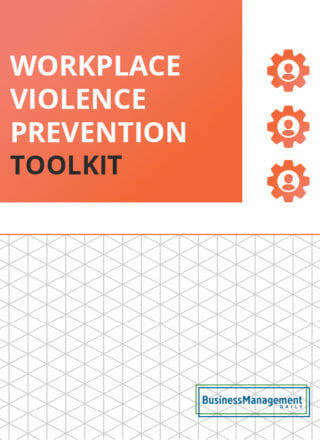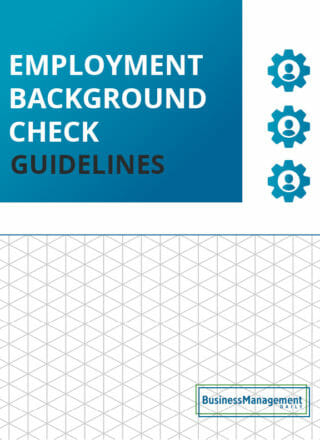How to avoid layoff discrimination and associated lawsuits
Within the last year, we’ve seen widespread layoffs in the tech industry. Prominent companies like Meta, Netflix, Google, and X (formerly Twitter) have made headlines for reducing their workforces. In unstable economic conditions and changing business climates, layoffs are sadly sometimes necessary.
However, some of these companies have also come under fire for alleged layoff discrimination. Prism, an advocacy group that promotes worker’s rights among several causes, found that tech layoffs have disproportionately impacted workers from marginalized communities. Underrepresented groups in the tech industry such as women, people with disabilities, and BIPOC employees.
If your business is facing the unfortunate task of conducting layoffs, it’s important to understand how to manage the process compliantly and avoid accusations of layoff discrimination.
What is layoff discrimination?
Under the Fair Housing and Employment Act, it is illegal for employers to discriminate against employees based on protected characteristics such as race, national origin, religion, disability, marital status; sex, gender, gender identity, gender expression, sexual orientation, military or veteran status, and age (for those 40 and older). This also applies to layoffs. Employers may not select employees for layoffs or a reduction in force (RIF) based on these protected attributes.
Most employers are aware of basic nondiscrimination rules regarding race, ethnicity, religion, and sexual orientation, but let’s explore some other common forms of layoff discrimination that can get employers in trouble.
Age discrimination
Age discrimination is one of the most common and most highly regulated forms of layoff discrimination. The Age Discrimination in Employment Act (ADEA) prohibits employers with 20 or more employees (or any governmental employers) from engaging in employment practices that discriminate against employees aged 40 and over. This includes discriminating against older employees when determining layoffs.
Layoff discrimination based on FMLA Leave
FMLA leave is another tricky situation when it comes to layoffs. FMLA leave is job-protected leave, so you must generally reinstate the employee to an equivalent role at the end of their leave. Layoffs and companywide reorganizations are the rare occasions when workers on FMLA leave may be terminated. However, you’ll want to proceed with caution.
You cannot consider the employee’s FMLA leave as a factor in the decision to lay them off. You also can’t use absenteeism as one of the layoff criteria unless you exclude any time that workers were on FMLA leave (including intermittent leave). This doesn’t mean that employees on FMLA leave can’t be laid off, but employers should be sure that they can properly justify how the employee was selected.
Retaliation for filing a complaint
The Equal Employment Opportunity Commission(EEOC) makes it clear that businesses cannot select employees for layoffs based on the fact that they reported discrimination, participated in a discrimination investigation or lawsuit, or otherwise opposed discrimination that they observed in the workplace. Whistleblowers who made other types of complaints should also not be targeted for layoffs.
These employees may be laid off while the business is undergoing a reduction in force, but actions taken in relation to discrimination investigations or other complaint processes should not be considered as a factor in determining who gets laid off.
Layoff best practices to avoid discrimination
If you’re planning to conduct layoffs or an RIF, keep these key considerations in mind.
Create compliant layoff criteria
If you are undergoing a partial reduction in force (ie. not fully shutting down the business), you’ll need to create clear, objective criteria for how you will create your layoff list. Typically the best way to make the process equitable and avoid layoff discrimination is to select multiple criteria rather than taking a single factor.
Some legally compliant factors to consider include:
-
Length of service. A last in, first out approach is taken frequently when deciding who to lay off.
-
Employment status. It’s also common to give priority to full-time staff (who often rely on the job for health coverage) and lay off part-time or temporary staff first.
-
Skills. Businesses often want to avoid laying off those with especially necessary or rare skills.
-
Performance. A merit-based approach that ranks employees based on performance reviews or other performance indicators is typically allowed.
-
Position. Sometimes organizations will lay off specific departments or eliminate lower-level positions (such as assistants) based on changing business needs.
Consider the impact of layoffs on protected groups
Employers planning a layoff should evaluate its impact on protected groups, including older workers, people with disabilities, and other protected groups. If you find that your existing layoff criteria will have a disparate impact on a protected class, revise your layoff criteria if possible.
Typically once you have a rough draft layoff list, you’ll want to review the demographic makeup of the list to see if any specific populations are being disproportionately impacted.
Beyond reviewing demographic data, it’s also a good idea to take a broader look at your list and see where employees may perceive discrimination. For example, if you have twelve employees who have taken FMLA leave in the past year and all twelve of them somehow made it onto the layoff list, you may want to unpack whether any bias could have come into play.
In this scenario, it would be worth double-checking that FMLA-covered absences weren’t counted as absenteeism or that lowered productivity resulting from the FMLA absences didn’t get counted against the employee if attendance or productivity was considered in the criteria. Also, consider whether there is an adjustment that could be made to the layoff criteria that might create a more equitable outcome.
Be careful when focusing on tenure as a criteria
Often length of tenure is selected as one of the main layoff criteria. This is a legally allowed choice, as long as it does not disparately impact certain protected groups.
One thing to keep in mind is that many companies started amping up their diversity, equity, and inclusion (DE&I) recruiting efforts in the last three years. The sharp rise of remote work fueled by the COVID-19 pandemic also coincides with the timeframe. Remote hiring allows for geographic diversity which often leads to more overall diversity (particularly if your business was originally based in a city that is not very culturally diverse), and remote work is often more accessible to workers with disabilities. As such, if you create a layoff list made up primarily of employees hired in the last couple of years who lack tenure, there’s a good chance it’s going to include a disproportionate number of people from protected classes.
Train managers
Ensure that any managers involved in applying layoff selection criteria thoroughly understand the criteria and can apply it accurately and consistently. This often includes department or branch managers who may be assisting in the layoff selection for their direct reports. Poorly trained managers are one of the biggest compliance liabilities for businesses, as one team lead that engages in layoff discrimination (even unintentionally through unconscious bias) can result in discrimination claims and large penalties for the business. Human resources teams should aim to provide thorough training to guide anyone involved in layoff selections through the process.
Seek legal advice and follow all legal guidelines
Layoffs are tricky to navigate from a compliance perspective. Having an attorney look over your layoff criteria and planned layoff list can help you avoid claims of layoff discrimination.
Even beyond discrimination concerns, there are other compliance considerations such as notification requirements. The Worker Adjustment and Retraining Notification Act (WARN) requires employers to send advance notice to each employee affected by a closing or mass layoff, the state’s dislocated worker unit, and the appropriate local government official for your city. These notices must be made in writing at least 60 days before the layoff and must include specific information about the employee, company, and planned layoff. Some states like New York and California also have mini-WARN Act laws that must be followed as well.
As such, it’s best to work with an employment lawyer throughout the process. Even if you don’t have the budget to work with an attorney on an ongoing basis, you may be able to find an employment law firm that offers a free consultation or whom you can afford to book one appointment with to review your layoff plan and identify any applicable notification requirements or discrimination concerns.
Consider asking for employment discrimination waivers
Employers may ask laid-off employees to formally waive their right to file a discrimination complaint against your business (essentially agreeing not to sue). Many businesses do this during all mass layoffs or reductions in force as a preventative measure, but there are a few rules you’ll need to follow.
-
The waiver agreement must provide the employee with something of value that they are not already entitled to. Since there is no federal law requiring employees to offer severance packages, many employees offer a severance package in exchange for signing the waiver.
-
The agreement can waive the employee’s individual right to sue based on past experiences, but cannot be extended to anything that may arise after signing the agreement. For example, if a manager makes a sexual advance or a racist comment after the agreement has been signed, the employee can sue and win as long as all other conditions are met.
-
The employee must “knowingly and voluntarily” agree not to file a discrimination complaint. There are specific rules set by the EEOC related to these waivers and what constitutes knowingly and voluntarily signing the waiver.
-
The waiver may not prevent or restrict an employee from filing a discrimination complaint with the EEOC.
-
The waiver agreement must not limit the employee’s right to testify, assist, or participate in an EEOC investigation, hearing, or proceeding.
-
The agreement must comply with applicable state and federal laws. There are several state laws that relate to severance packages, how long an employee has to consider such agreements, and what can be included in the waiver agreement that may apply depending on where your business operates.





